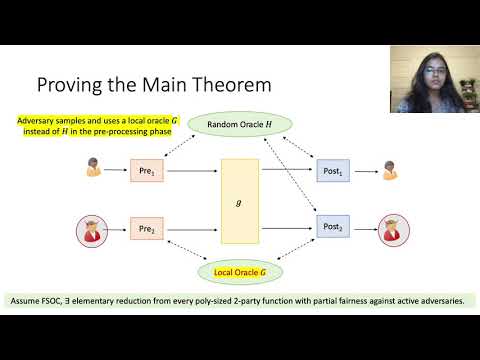CryptoDB
On Actively-Secure Elementary MPC Reductions
| Authors: | |
|---|---|
| Download: | |
| Abstract: | We introduce the notion of \emph{elementary MPC} reductions that allow us to securely compute a functionality $f$ by making a single call to a constant-degree ``non-cryptographic'' functionality $g$ without requiring any additional interaction. Roughly speaking, ``non-cryptographic'' means that $g$ does not make use of cryptographic primitives, though the parties can locally call such primitives.
Classical MPC results yield such elementary reductions in various cases including the setting of passive security with full corruption threshold $t |
Video from TCC 2021
BibTeX
@article{tcc-2021-31527,
title={On Actively-Secure Elementary MPC Reductions},
booktitle={Theory of Cryptography;19th International Conference},
publisher={Springer},
doi={10.1007/978-3-030-90459-3_24},
author={Benny Applebaum and Aarushi Goel},
year=2021
}

